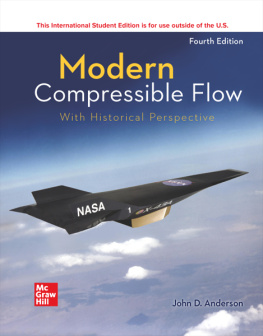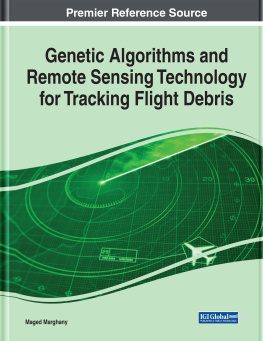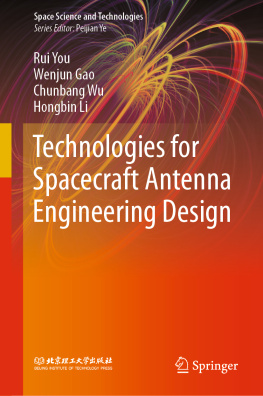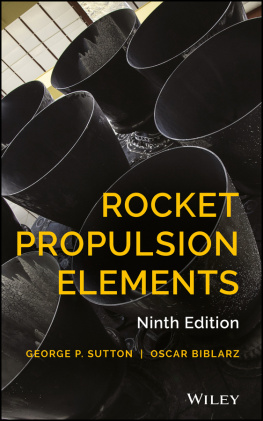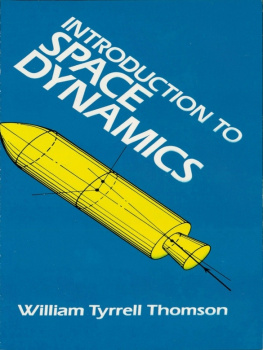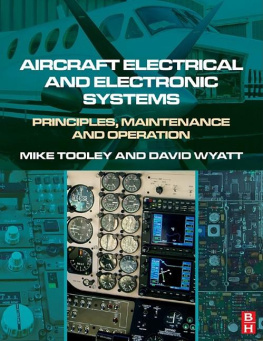

INTRODUCTION TO FLIGHT
Published by McGraw Hill LLC, 1325 Avenue of the Americas, New York, NY 10121. Copyright 2022 by McGraw Hill LLC. All rights reserved. Printed in the United States of America. No part of this publication may be reproduced or distributed in any form or by any means, or stored in a database or retrieval system, without the prior written consent of McGraw Hill LLC, including, but not limited to, in any network or other electronic storage or transmission, or broadcast for distance learning.
Some ancillaries, including electronic and print components, may not be available to customers outside the United States.
This book is printed on acid-free paper.
1 2 3 4 5 6 7 8 9 LCR 26 25 24 23 22 21
ISBN 978-1-260-59799-8
MHID 1-260-59799-7
Cover Image: Air Force Photo/NASA
All credits appearing on page or at the end of the book are considered to be an extension of the copyright page.
The Internet addresses listed in the text were accurate at the time of publication. The inclusion of a website does not indicate an endorsement by the authors or McGraw Hill LLC, and McGraw Hill LLC does not guarantee the accuracy of the information presented at these sites.
mheducation.com/highered
page iii
ABOUT THE AUTHORS

Courtesy of John Anderson
John D. Anderson, Jr ., was born in Lancaster, Pennsylvania, on October 1, 1937. He attended the University of Florida, graduating in 1959 with high honors and a Bachelor of Aeronautical Engineering degree. From 1959 to 1962 he was a lieutenant and task scientist at the Aerospace Research Laboratory at Wright-Patterson Air Force Base. From 1962 to 1966 he attended The Ohio State University under National Science Foundation and NASA Fellowships, graduating with a PhD in Aeronautical and Astronautical Engineering. In 1966 he joined the U.S. Naval Ordnance Laboratory as Chief of the Hypersonic Group. In 1973 he became Chairman of the Department of Aerospace Engineering at the University of Maryland, and from 1980 to his retirement in 1999 he was Professor of Aerospace Engineering at Maryland. In 1982 he was designated a Distinguished Scholar/Teacher by the university. During 19861987, while on sabbatical from the university, Dr. Anderson occupied the Charles Lindbergh Chair at the National Air and Space Museum of the Smithsonian Institution. In addition to his appointment in aerospace engineering, in 1993 he was elected to the faculty of the Committee on the History and Philosophy of Science at Maryland, and an affiliate faculty member in the Department of History. Since 1999, he is Professor Emeritus of Aerospace Engineering, and Glenn L. Martin Institute Professor of Engineering at Maryland. Also since 1999, he is the Curator of Aerodynamics at the National Air and Space Museum of the Smithsonian Institution.
Dr. Anderson has published eleven books: Gasdynamic Lasers: An Introduction , Academic Press (1976), A History of Aerodynamics and Its Impact on Flying Machines , Cambridge University Press (1997), The Airplane: A History of Its Technology, American Institute of Aeronautics and Astronautics (2003), Inventing Flight , Johns Hopkins University Press (2004), X-15: The Worlds Fastest Rocket Plane and the Pilots Who Ushered in the Space Age (with Richard Passman), Zenith Press (2014), and with McGraw-Hill, Introduction to Flight , 8th edition (2016), Modern Compressible Flow , 3rd Edition (2003 ), Fundamentals of Aerodynamics , 5th edition (2011), Hypersonic and High Temperature Gas Dynamics (1989), Computational Fluid Dynamics: The Basics with Applications (1995), and Aircraft Performance and Design (1999). He is the author of more than 120 papers on radiative gas dynamics, entry aerothermodynamics, gas dynamic and chemical lasers, computational fluid dynamics, applied aerodynamics, hypersonic flow, and the history of aerodynamics. Dr. Anderson is in Whos Who in America and is a member of the National Academy of Engineering, an Honorary Fellow of the American Institute of Aeronautics and Astronautics, and Fellow of the Royal Aeronautical Society. He is also a Fellow of the Washington Academy of Sciences and a member of Tau Beta Pi, Sigma Tau, Phi Kappa Phi, Phi Eta Sigma, The American Society for Engineering Education (ASEE), the Society for the History of Technology, and the History of Science Society. He has received the Lee Atwood Award for excellence in Aerospace Engineering Education from the AIAA and the ASEE, the Pendray Award for Aerospace Literature from the AIAA, the von Karman Lectureship from the AIAA, the Gardner-Lasser History Book Award from the AIAA, and the Hypersonic Systems Award from the AIAA.

Courtesy of Mary Bowden
page iv
Mary L. Bowden grew up in New York City where she attended a French school, the Lyce Franais de New York, graduating after the first year of the French Baccalaureat degree. She received a Bachelor of Arts degree in Mathematics from Cornell University in 1978. Then, thanks to an Amelia Earhart Scholarship from Zonta International, she enrolled at MIT and obtained first a Master of Science degree in 1980 and then a Doctor of Science degree in Aeronautics and Astronautics in 1988. Her graduate degrees focused on human factors for space construction and dynamics of large space structures. After graduation, Dr. Bowden spent 8 years working in the aerospace industry for a number of different companies, including American Composites Technology, a small company in Massachusetts focused on pultrusion technology; American Rocket Company in California developing a hybrid launch vehicle; and most notably AEC-Able Engineering, also in California, a small aerospace mechanisms company designing, building, and testing the deployable masts for the International Space Station solar arrays.
In 1996, Dr. Bowden joined the faculty of the Aerospace Engineering Department at the University of Maryland College Park (UMD) as a Visiting Professor. She served as the Associate Graduate Director in Aerospace for 10 years, and later served as the Acting Director of the Women in Engineering Program for the Clark School of Engineering at UMD from 2017 to 2020. She is now a Senior Lecturer in Aerospace Engineering and a Keystone Instructor for the Clark School, where she specializes in teaching introductory Mechanics courses and an Aerospace Systems course, as well as upper-level Aerospace Structures and Space Systems Design courses. Dr. Bowden received the Women In Aerospace (WIA) Aerospace Educator Award in 2016.
Dr. Bowden is also the Director of the Balloon Payload Program at UMD, which was started in 2004, sponsored by the Maryland Space Grant Consortium, with the goal of giving aerospace students the opportunity to fly experiments in the near-space environment. The program just carried out its 95th tracked flight of a helium-filled weather balloon, and is continuing with roughly three balloon launches each semester. Over the years, these flights have lifted scores of payloads for hundreds of students from half a dozen different schools in Maryland. The Balloon Payload Team has achieved a number of accomplishments, including flying a few successful payloads on NASA-sponsored High Altitude Balloon flights (through the HASP program) and launching a micro-gravity experiment on a sounding rocket from NASA Wallops Flight Facility (through the RockSatX program). Dr. Bowden received the A. James Clark Student Competition Advisor of the Year Award in 2017 for supervising numerous award-winning teams along with her husband, Dr. David Akin.
Next page

